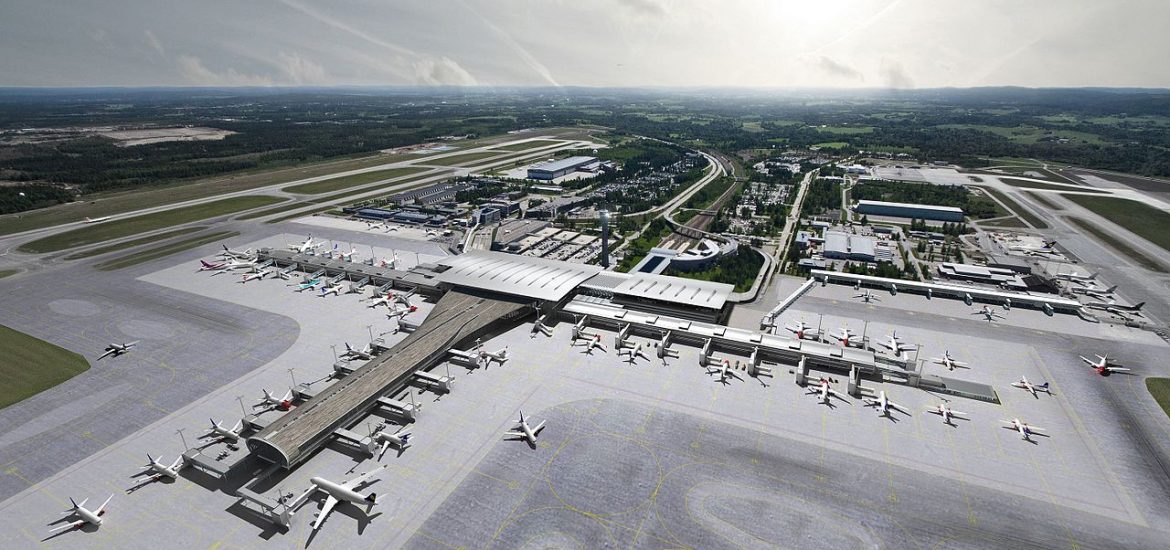
Oslo International Airport (pictured), which last year opened its new green terminal, says it is planning to build an entire city which produces more energy than it uses.
The Nordic Office of Architecture and Haptic, the Norwegian architecture firm which helped design the terminal that opened in April 2017, initially aimed to cut 50 per cent off the airport’s energy use. The project received an “excellent” rating from the Building Research Establishment Environmental Assessment Method.
The terminal was made out of natural wood and stone from forests that were properly maintained with windows to maximise daylight use.
The Nordic Office of Architecture designed the original airport in the 1990s and completed the curving extension, doubling the airport’s size and expanding its capacity to 35 million passengers a year.
The practice, which also has offices in Copenhagen and London, is developing a six-runway airport in Istanbul. It is due to be completed in 2020 and be “the largest airport in the world”.
The 370-hectare city project is projected to run on renewable power and driverless public transport.
Oslo Airport City’s (OAC) plans include a park, recreation and event centres, restaurants, offices and hotels.
A large indoor swimming pool is included and a bike route is depicted encircling a large lake filled with boats and paddle boarders. There are multi-storey climbing walls on opposing banks.
OAC would only allow electric vehicles and the architects have promised that its citizens “will never be more than five minutes away from public transport”.
“This is a unique opportunity to design a new city from scratch,” Tomas Stokke, director of Haptic Architects, told the media. “Using robust city planning strategies such as walkability, appropriate densities, active frontages and a car-free city centre, combined with the latest developments in technology, we will be able to create a green, sustainable city of the future.”
The new city is expected to run entirely on the renewable energy it produces, selling the excess electricity to other areas or using it to de-ice planes and run public transport. The project is expected to take 30 years to complete. The first phase of construction is due to begin next year and the airport expects to launch its first electric aeroplanes in the next seven years.
Oslo Airport’s workforce is predicted to almost double from 22,000 staff to 40,000 by 2050.
“As long-term city developers with focus on sustainable, innovative solutions, we believe the future of airport city development in Norway and Oslo is not a matter of if, but when,” Thor Thoeneie, managing director of OAC, said.
Oslo International Airport. Picture credit: Wikimedia





